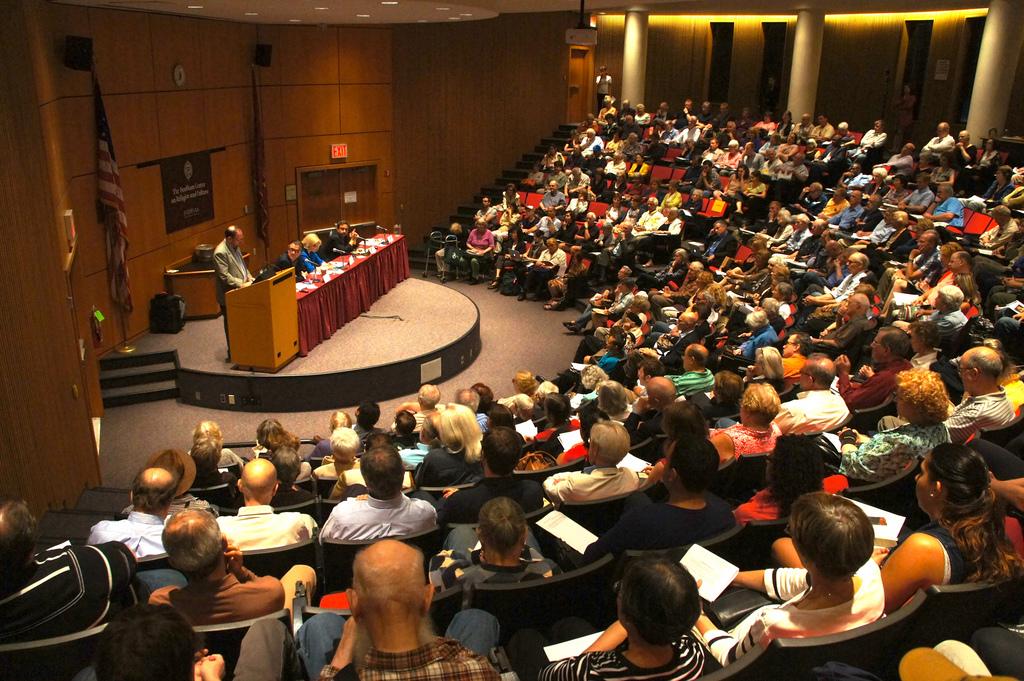The Apocalypse and America on Discussion at FCLC
September 15, 2012

Apocalypse Now: America’s Fascination with Doomsday and Why It Matters is a public lecture that was held on Wednesday, Sept. 12. The lecture focused on Americans’ fixation with apocalyptic scenarios, as seen in politics throughout American history and in American popular culture. Elaine Pagels, Jim Hoberman, Andrew Delbanco and host Kurt Anderson delivered the lecture in McNally Amphitheater.
Pagels, the Harrington Spear Paine professor of religion at Princeton University, presented the religious foundations of American apocalypticism by giving a brief summary of The Book of Revelation in the Christian Bible. Christians believe that Saint John’s visions of God and His wrath and spiritual warfare detailed in Revelation are what will occur during the apocalypse, or the End Times. Pagels proceeded to show how the images (e.g. the Seven-Headed Beast and the Whore of Babylon) of Revelation have inspired certain images and propaganda during the Civil War and World War II.
Delbanco, the director of American studies and the Julian Clarence Levi professor in humanities at Columbia University, presented on apocalypticism in American political culture, past and present. Delbanco made the claims that apocalyptic language and thinking is always evolving and that the fault line between believers and skeptics, although evident in our culture for a long time, does not divide the believers and skeptics as resolutely as “red” (Republican) and “blue” (Democrat) states are resolutely defined.
Hoberman, an American film critic, presents apocalypticism in American popular culture. He claimed that the cinema, specifically disaster films (e.g. Godzilla, The Day After Tomorrow, Titanic, Armageddon) with apocalyptic imagery, has provided viewers with an immersive experience of the end times. The lecture ended with questions from the audience as well as questions from Kurt Andersen.









